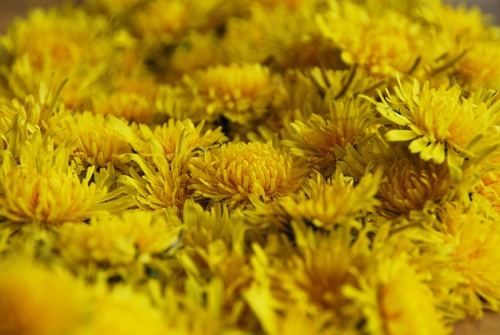One of our favorite flower and garden-related quotes is: “To the sad, every flower is a weed; to the happy, every weed is a flower”.
But even this saying doesn’t seem to do justice to the dandelion. Even the cheerful and friendly gardeners in our circle of friends don’t like dandelions at all. Some people refer to it as a piss plant, in France it even bears the official name Pissenlit, which translates as “piss in bed”. But why actually?
Didn’t we all love picking up dandelions as children and blowing the seeds away just to watch them dance with the wind? Didn’t we toot on the stems and marvel at the torn stems in the water as they curled up?
So it’s time for a little root cause analysis and, above all, a song of praise for the common dandelion (Taraxacum sect. Ruderalia)!
It doesn’t take long to research the causes, because dandelions mean a lot of work for the gardener who just wants a simple, short, green lawn. On closer inspection, however, all the characteristics that the friend of the English lawn hates make the dandelion the guerrilla gardener’s best friend.
Dandelion for guerrilla gardening
Dandelions are an ideal partner for guerrilla gardening.For one thing, it also works great in seed bombs, and for another, dandelions are relatively early in the year and flower beautifully.It is also perennial and incredibly hardy.What hardly anyone knows is that the dandelion plant always adapts its growth to the conditions. Dandelion flowers can be enthroned on stems that can easily reach half a meter in height, and the leaves can also reach similar dimensions.But if the dandelion is cut (for example with a lawnmower), the plant grows back quickly, but keeps its leaves strictly flat on the ground and the flowers then only grow on barely visible stems and lie almost directly on the ground. And even if the dandelion is pulled out, a small piece of root is enough to form a new plant.Dandelions are also very frugal and even grow in crevices in walls and similar barren places.
Dandelion as active environmental protection
Dandelions and active environmental protection? Do they go together? And how! As a composite flower, dandelion is an exceptionally good bee pasture and provides a lot of nectar per flower basket. In the early season in particular, it is often one of the few places our pollinating little friends can fly to.
Dandelion as a useful plant
The common dandelion is also a true all-rounder as a useful plant.
Every part of the plant is useful and usable.In homeopathy, dandelion is used as a diuretic, diuretic and digestive aid (hence the names “Pissing Carnation” and “Pissenlit”).
While the roots can be used to make a coffee substitute, the flowers can simply be added to salads.Or the flowers can be used to make dandelion flower jelly or dandelion flower honey.
The leaves are also suitable for adding to salads.If the green leaves taste too bitter, here’s another little insider tip: dandelion leaves with fewer bitter substances can be obtained by covering the young plants with upturned terracotta pots. The plants then produce fewer bitter substances and less leaf green and remain yellowish. As the leaves tend to grow horny without sunlight, they often become longer and narrower under the pots.
So, is there any reason not to love dandelions? We don’t think so!

